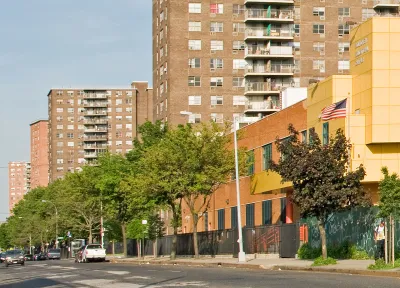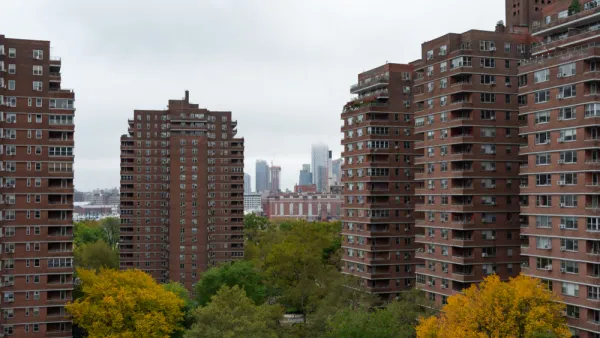Even if the money for repairing New York City's public housing were to materialize, it would be money poorly spent, according to this editorial.

An editorial by Crain's New York Business makes the argument that it makes more sense to raze New York City Housing Authority properties (i.e., the projects) and build new than it does to repair the existing properties.
To bring New York City Housing Authority properties to a state of good repair would cost $31.8 billion, according to an assessment released last month. That is 23 times greater than the agency's capital budget and more than 100 times the federal capital funding it gets in a year. The city won't allocate that kind of money, which is as much as it costs to operate the entire Police Department for five years. Albany has pledged $550 million, less than 0.2% of what's needed.
But even if $31.8 billion fell from the sky, patching up Nycha's 326 projects and 176,000 apartments would waste money and human potential.
The argument made by the editor's of Crain's appeals to the purely rational (i.e., money would be saved in the long run) and the political (i.e., "no politicians are held accountable, and the system needs to be rebuilt along with the buildings).
FULL STORY: Knock down the projects and bring in the cranes

National Parks Layoffs Will Cause Communities to Lose Billions
Thousands of essential park workers were laid off this week, just before the busy spring break season.

Retro-silient?: America’s First “Eco-burb,” The Woodlands Turns 50
A master-planned community north of Houston offers lessons on green infrastructure and resilient design, but falls short of its founder’s lofty affordability and walkability goals.

Delivering for America Plan Will Downgrade Mail Service in at Least 49.5 Percent of Zip Codes
Republican and Democrat lawmakers criticize the plan for its disproportionate negative impact on rural communities.

Test News Post 1
This is a summary

Test News Headline 46
Test for the image on the front page.

Balancing Bombs and Butterflies: How the National Guard Protects a Rare Species
The National Guard at Fort Indiantown Gap uses GIS technology and land management strategies to balance military training with conservation efforts, ensuring the survival of the rare eastern regal fritillary butterfly.
Urban Design for Planners 1: Software Tools
This six-course series explores essential urban design concepts using open source software and equips planners with the tools they need to participate fully in the urban design process.
Planning for Universal Design
Learn the tools for implementing Universal Design in planning regulations.
EMC Planning Group, Inc.
Planetizen
Planetizen
Mpact (formerly Rail~Volution)
Great Falls Development Authority, Inc.
HUDs Office of Policy Development and Research
NYU Wagner Graduate School of Public Service





























